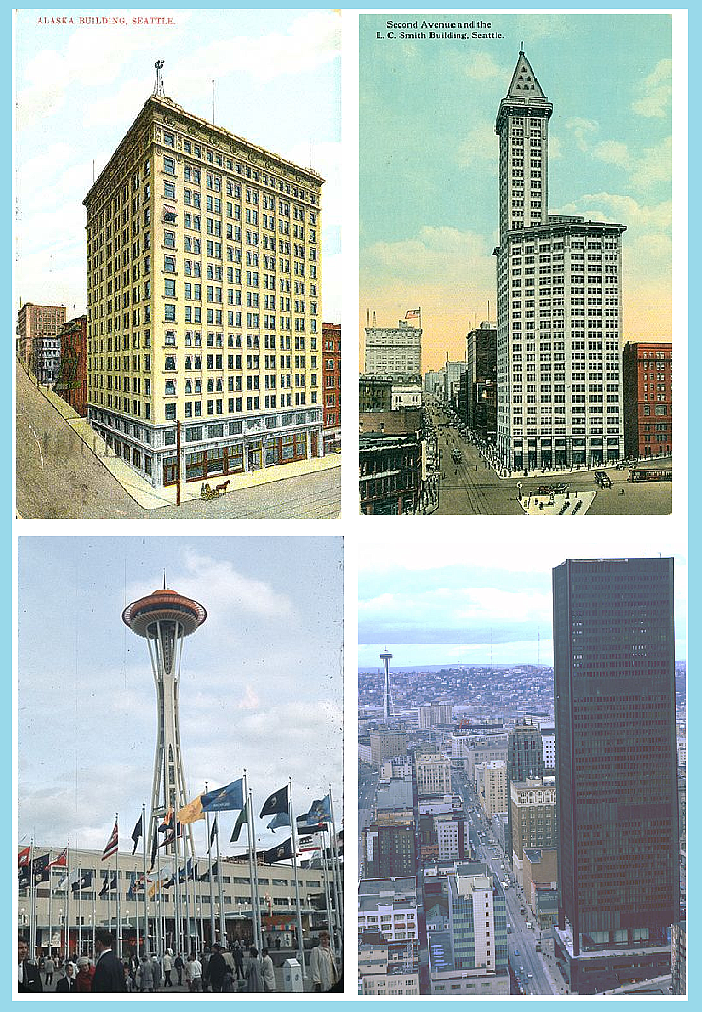Building Up in Seattle
A BRIEF HISTORY OF SEATTLE’S TALLEST STRUCTURES
March 7, 2023 at 10:55 a.m.
(left to right, upper row): Alaska Building, ca 1903; Smith Tower, ca 1914
(left to right, lower row): Space Needle, ca 1962; Seattle First National Bank (also known as the box the Space Needle came in), ca 1969.
This essay is courtesy of www.historylink.org, the free online encyclopedia of Washington state history.
On March 4, 1885, Dirty Dan Harris – founder of Fairhaven – and a bunch of his drunken, rowdy pals raised one of the biggest and tallest flags ever seen in the Northwest at that time. Planted in front of the Fairhaven Hotel, the 110-foot flagpole was so tall that it had to be made in two sections. It took the boozy bannermen most of a day to raise the 50-pound flag aloft, at which point they toasted themselves with a round of congratulatory drinks.
Just shy of a century later, Seattle's Columbia Center became the tallest structure in Washington when it opened on March 2, 1985. Topping out at a whopping 997 feet, the new skyscraper's dominating presence on the Seattle skyline led to a 1989 voters' initiative to establish growth limits downtown. Even though it passed, new zoning laws have effectively repealed the cap on heights, but no building has risen higher than Columbia Center … yet.
Seattle’s first steel-framed skyscraper was the 14-story Alaska Building, built in 1903. In 1910, work began on the Smith Tower, which opened in 1914. The pyramid-capped edifice was twice as tall as King Street Station, the city’s erstwhile highest building. For almost 50 years many heralded the Smith Tower as the “tallest building west of the Mississippi,” even though in 1931 a Kansas City skyscraper topped it by 19 feet.
Seattle’s skyline remained relatively unchanged until the opening of the Space Needle for the 1962 Seattle World’s Fair. Even though it stood north of downtown, the space age structure immediately became the recognized symbol for Seattle, so much so that when the Seattle First National Bank Building claimed the crown as the city’s tallest structure in 1969, it was often referred to as “the box the Space Needle came in.” Since then, Seattle's skyline has changed dramatically, and these days the South Lake Union neighborhood has become home for the next wave of tall buildings.
In addition learning more from the links in this article which provide essays on the topics mentioned, for more Washington state history, visit historylink.org





